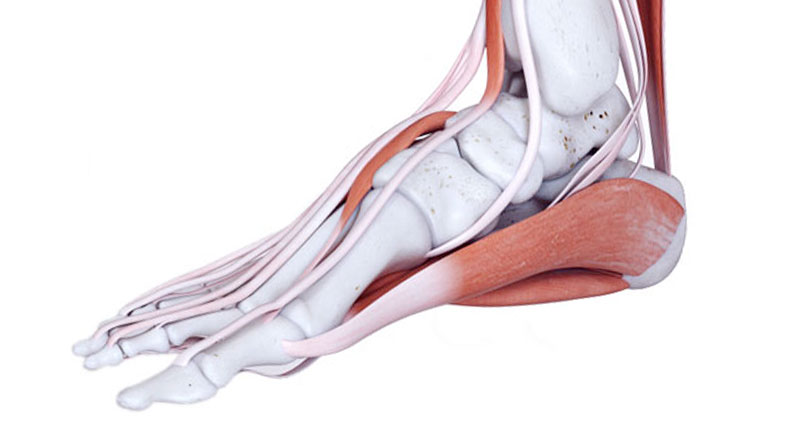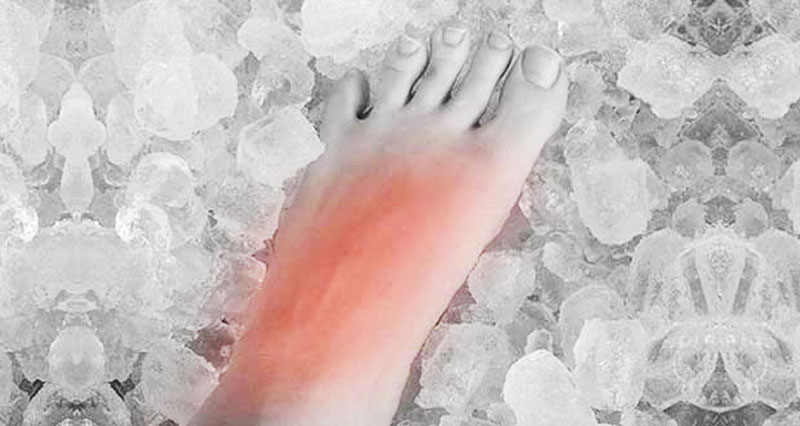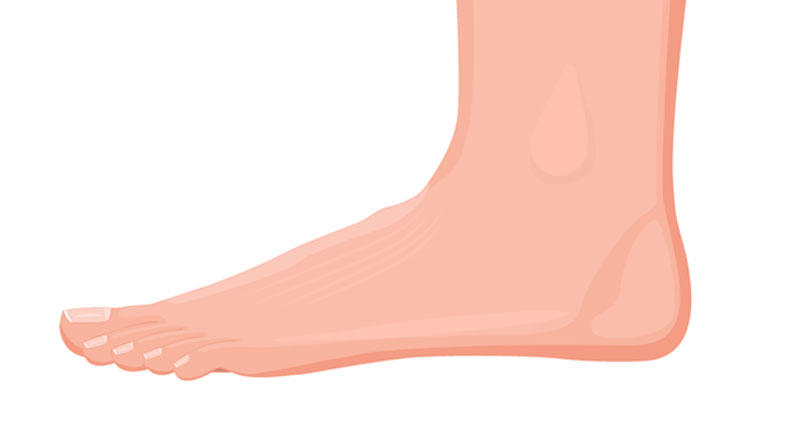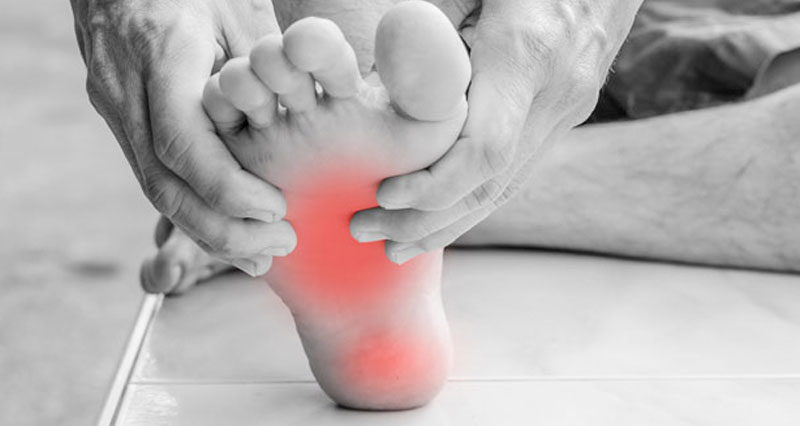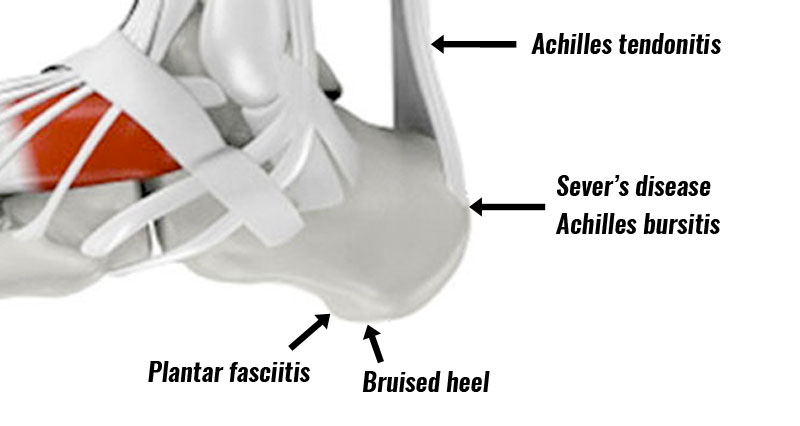Forefoot pain includes injuries to the long metatarsal bones in the foot, inside, outside and under the ball of the foot. Here we explain the causes of forefoot pain including skin conditions.
Medically reviewed by Dr. Chaminda Goonetilleke, 20th Jan. 2022
Has your injury occured suddenly or developed gradually over time?
- Acute injuries usually occur suddenly. You will be able to pinpoint a specific time when your injury occured.
- Chronic injuries develop gradually over time, or follow on from an acute injury which has not healed properly.
Chronic forefoot pain
These are gradual onset injuries, often caused by overuse. They include tendonitis, stress fractures, and inflamed joints.
Bunion
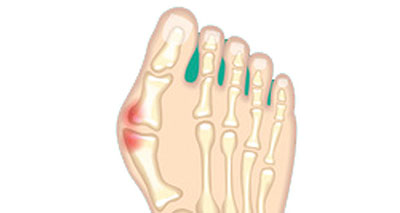
A bunion, also known as hallux valgus, is a painful swelling of the soft tissue, with bone enlargement over the inside of the forefoot. Specifically at the base of your big toe.
- Often your big toe bends in towards the other toes. Sometimes it may even lie across them.
- Pain develops gradually and gets worse over time.
- More on Bunions
Hallux Rigidus/Hallux Limitus
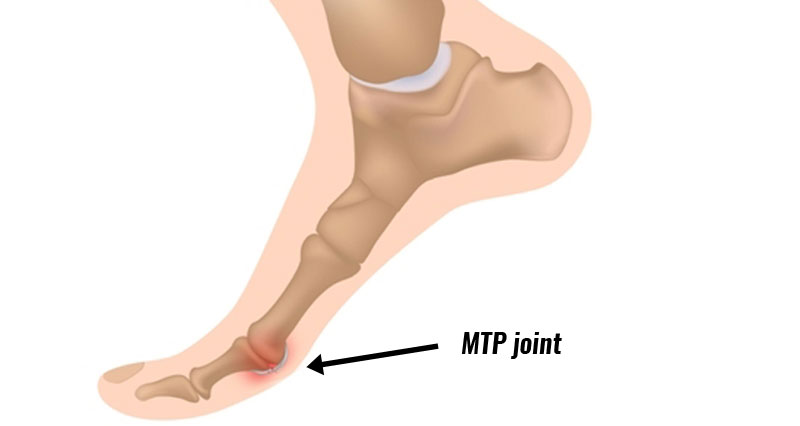
Hallux Rigidus is a term describing a stiff joint metatarsophalangeal joint (MTP joint). This is the joint at the base of the big toe. Symptoms include:
- A stiff big toe.
- Your MTP joint may also appear swollen and inflamed.
- Pain in the MTP joint, particularly when walking.
- You may also experience loss of movement in the joint, or walk with a limp.
- More on Hallux rigidus
Mortons Neuroma
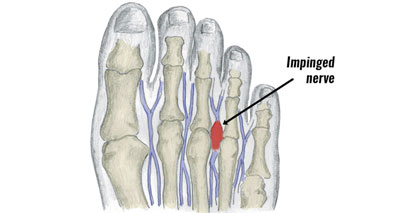
Morton’s neuroma or Morton’s syndrome is a condition resulting in pain between the third and fourth toes. Symptoms typically include:
- Pain between the third and fourth toes.
- Numbness, tingling or pins and needles.
- It is the outside of the third toe and the adjacent side of the fourth toe where you feel pain.
- More on Mortons neuroma
Metatarsal Stress Fracture
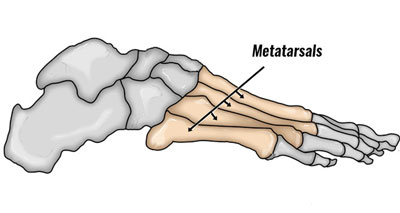
A metatarsal stress fracture is a hairline fracture in one of the long metatarsal bones in the foot, usually the second metatarsal.
Symptoms include pain in the middle front of the foot.
Overuse or poor foot biomechanics.
- More on Metatarsal stress fracture
Metatarsalgia
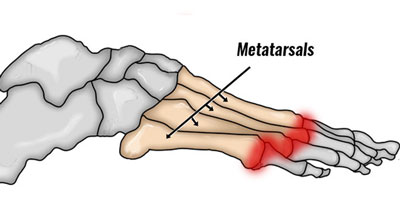
Metatarsalgia is an umbrella term describing forefoot pain, particularly metatarsal pain.
- Usually, the term refers to inflammation which occurs in the joints between the metatarsal bones in the foot and phalanges bones of the toes.
- The pain is normally gradual and makes the bottom of the ball of the foot tender.
- More on Metatarsalgia
Sesamoiditis/Synovitis of the MTP
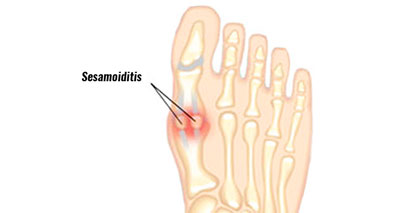
Sesamoiditis is an inflammatory condition affecting the small sesamoid bones in the foot. Most common is the 1st metatarsophalangeal joint under the base of the big toe. Symptoms include:
- Pain in the forefoot.
- Swelling and inflammation.
- Pain will normally come on gradually.
It is caused by overuse and repetitive impacts, particularly if there is an increase of weight on the forefoot, like in dancing.
- More on Sesamoiditis
Gout
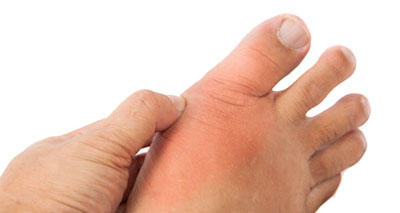
Gout is a form of arthritis caused by a build-up of uric acid within the body, which is a waste product of metabolism.
- It is more common in men aged 40-60.
- Symptoms normally appear suddenly.
- Pain, swelling, and itchiness in the big toe (MTP) joint.
- More on Gout
Acute injuries causing forefoot pain
Acute injuries are sudden onset, traumatic injuries. They include fractures, sprains, and strains.
Turf Toe
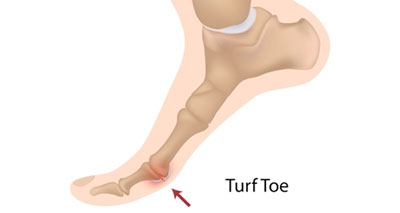
Turf toe occurs after a very vigorous upward bending of the big toe. As a result, ligaments under the base of the toe sprain (stretch or tear). Symptoms consist of:
- Pain in the MTP joint at the base of the big toe.
- Swelling
- Tenderness
- More on Turf Toe
Jones Fracture
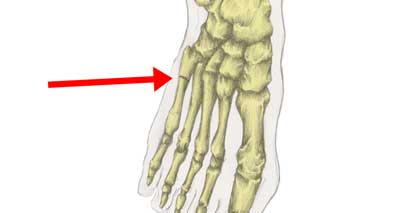
Jones fracture is a fracture of the 5th metatarsal bone on the outside of the foot. It can be caused by either overuse or suddenly through twisting/sprained your ankle.
- The main symptom is a pain on the outside of the foot.
- You will have difficulty in putting your weight on it.
- Medical help and x-rays will be needed to heal this foot injury.
- More on Jones fracture
Metatarsal Fracture
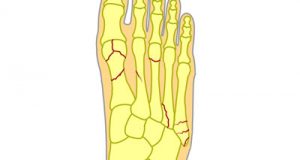
A metatarsal fracture is a break of one of the five long metatarsal bones in the foot.
- It is usually caused by a direct impact or trauma.
- Symptoms of sudden pain and rapid swelling.
- Seeking medical help is key to recovering from this foot injury to ensure the bones heal.
- More on Metatarsal Fracture
Skin conditions causing forefoot pain
Corns & Calluses
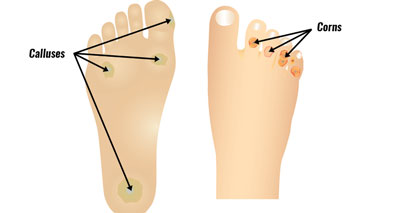
Corns and calluses occur with an excess, or thickening of the skin, usually on the soles of the feet.
- Calluses form on weight-bearing parts of the body.
- Corns form on non-weight-bearing areas.
- Applying gels to reduce friction and applying plasters can help ease any pain and protect the area.
- More on Corns & Calluses
Athlete’s Foot
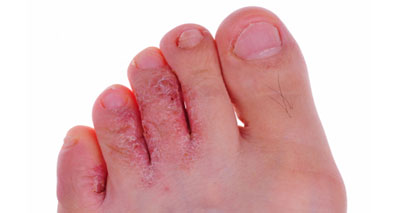
Athlete’s foot is also known as Tinea Pedis. It is a skin infection common amongst athletes, and those who wear trainers or other non-breathable footwear. A fungus that grows in warm, moust environments causes it. For example sweaty trainers!
- More on Athlete’s foot
Blisters
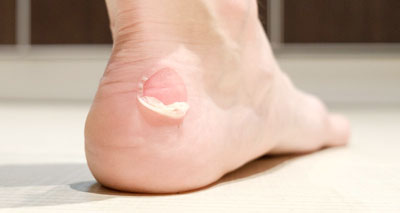
Blisters occur as a result of friction between the skin and the inside of a shoe or clothing.
Heat builds up causing a swelling under the skin. Redness on the skin is the first sign of a blister. They are particularly common on the heel, instep, and toes.
- More on Blisters
Verruca
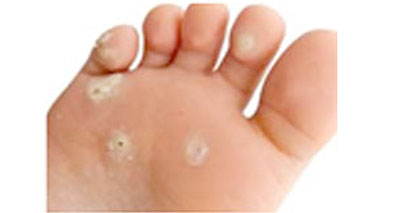
A verruca, also called a plantar wart appears on the sole of the foot. They are the same as warts on any other part of the body. A virus known as human papillomavirus (HPV) causes them. They vary in size and are not normally something to worry about. However, they can be contagious.
- More on Verruca


